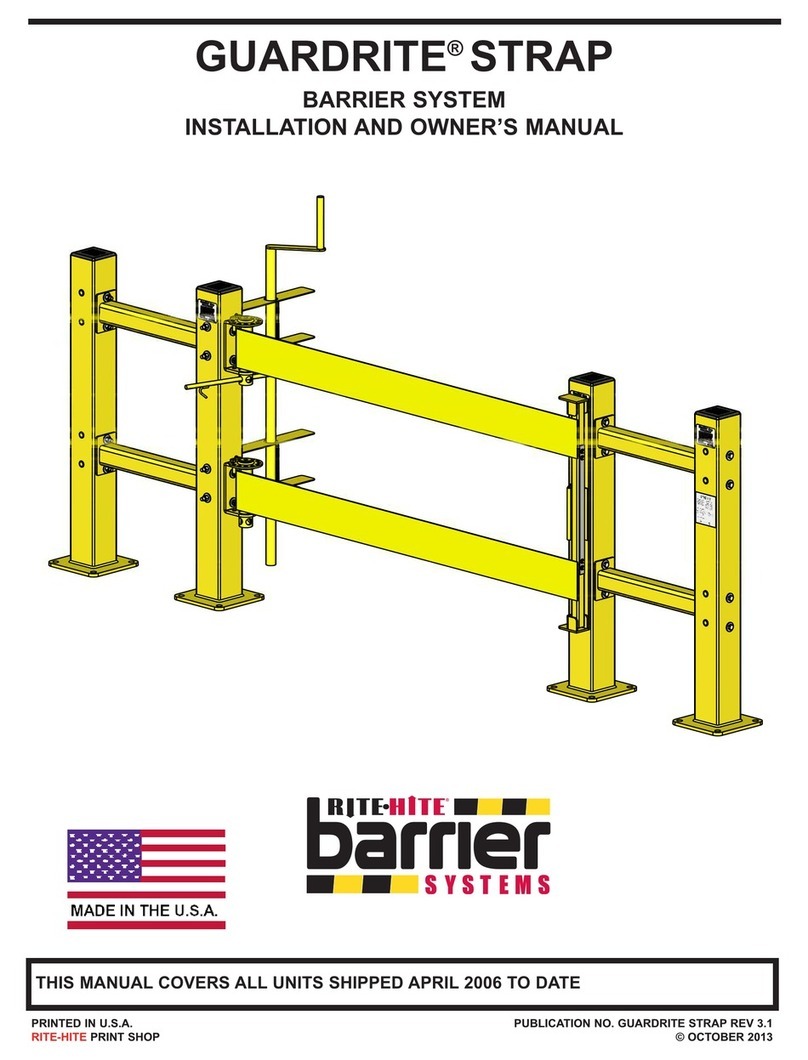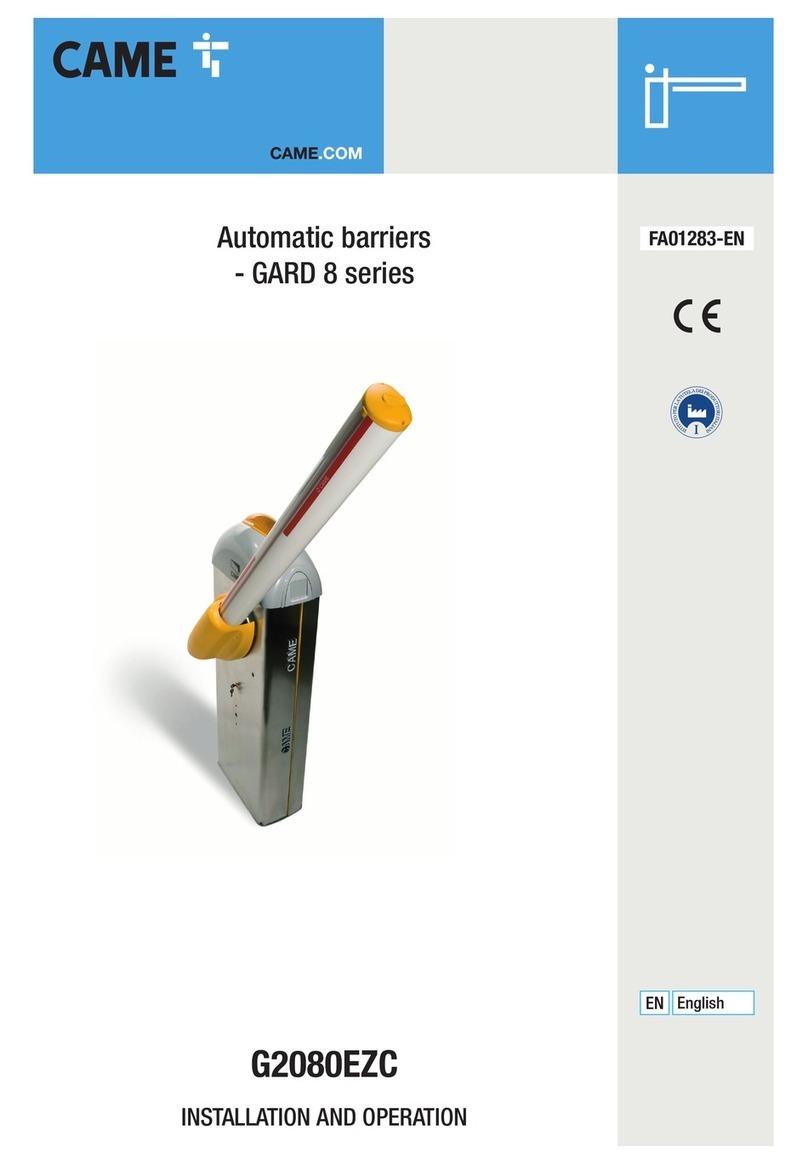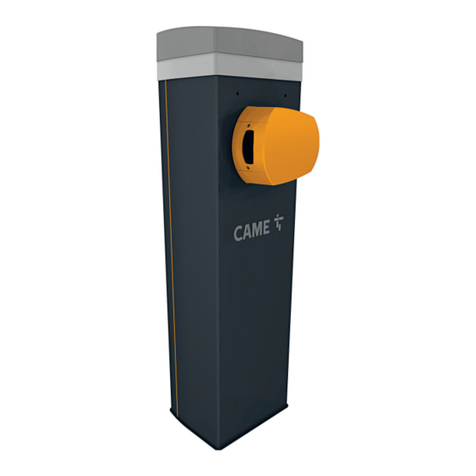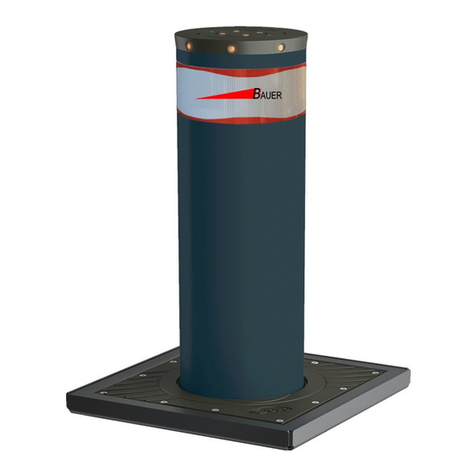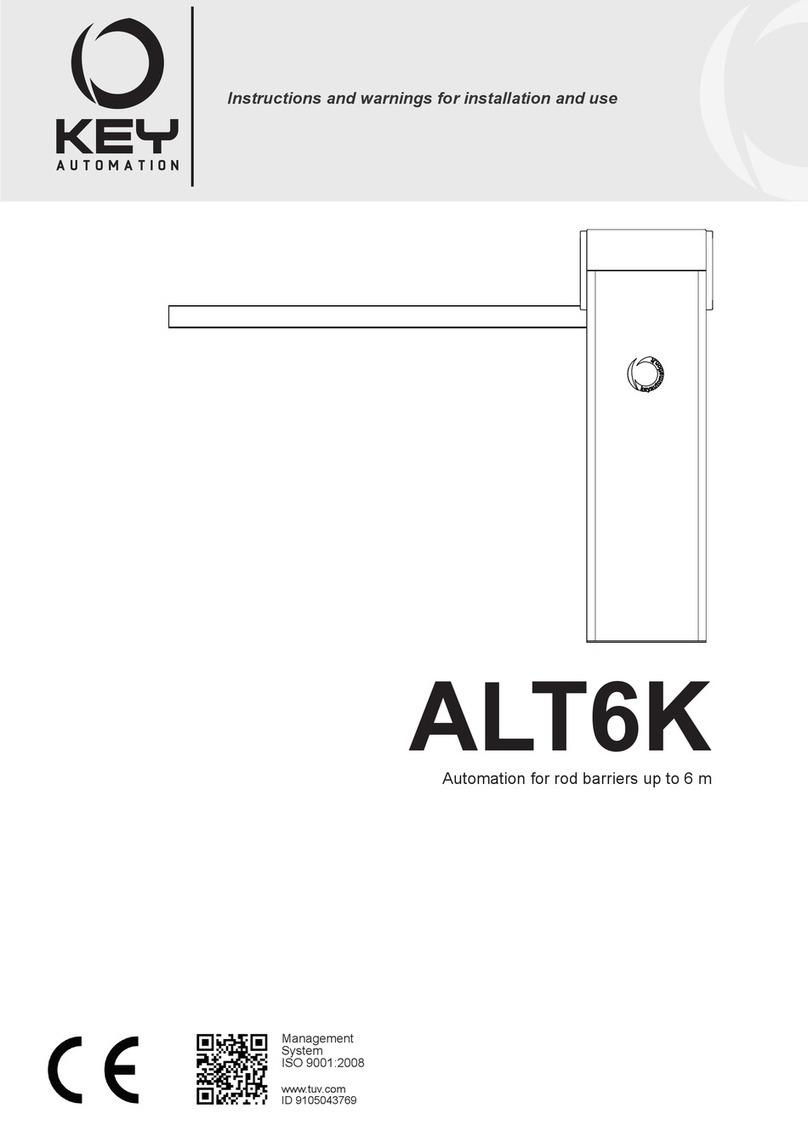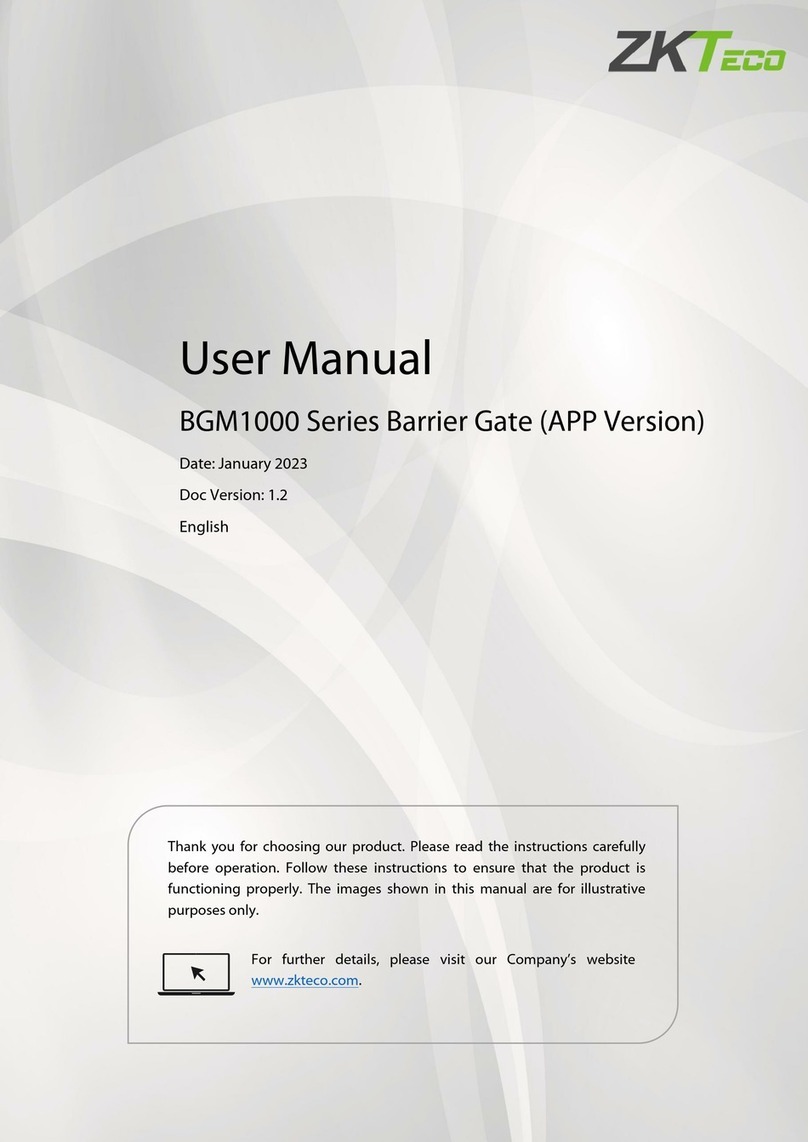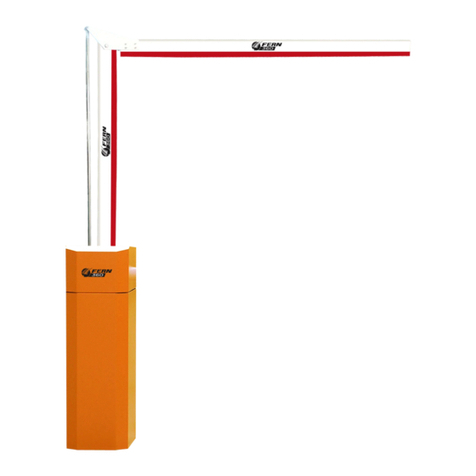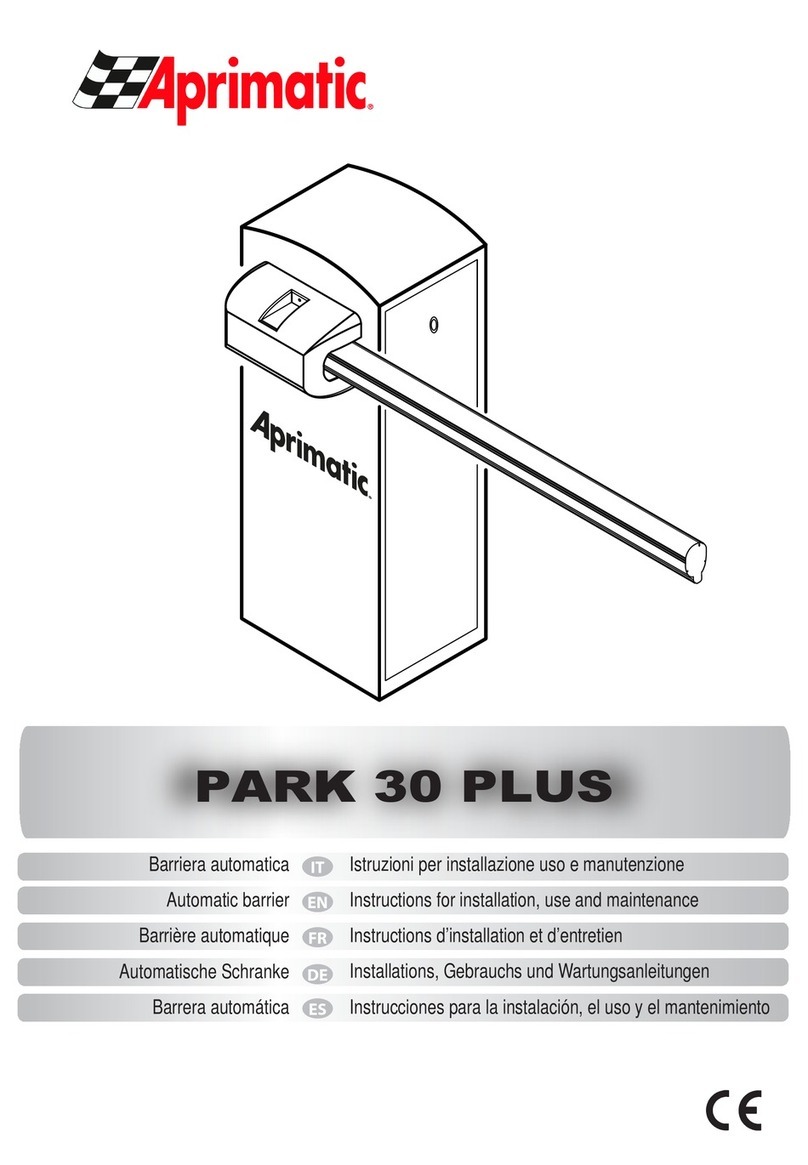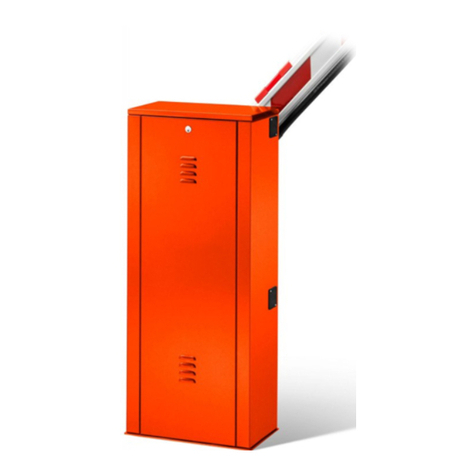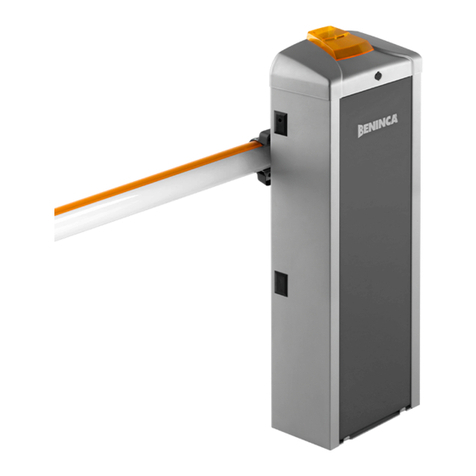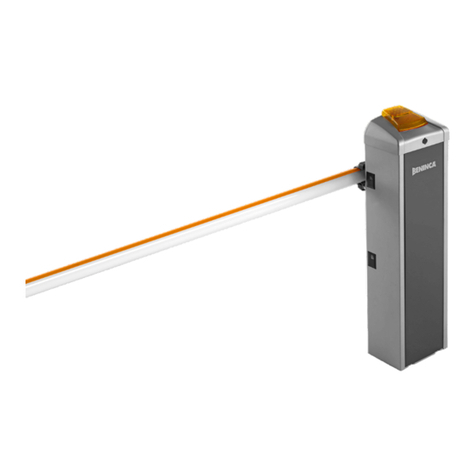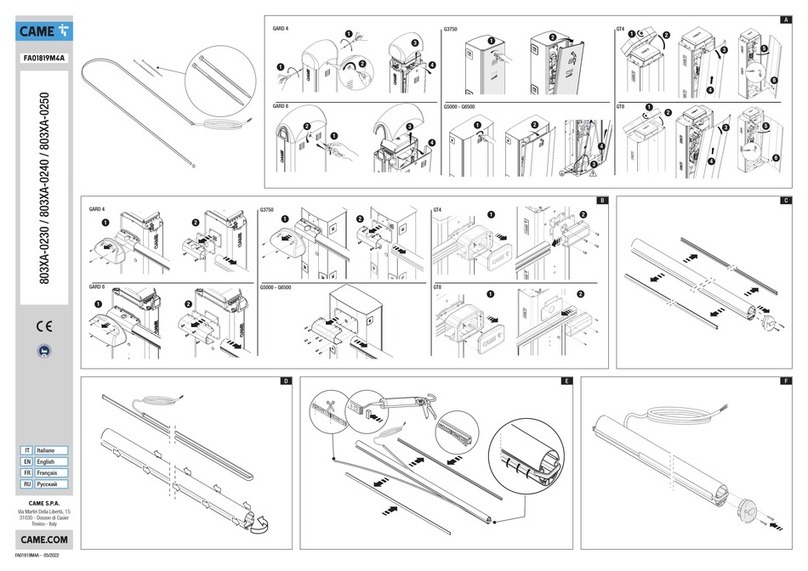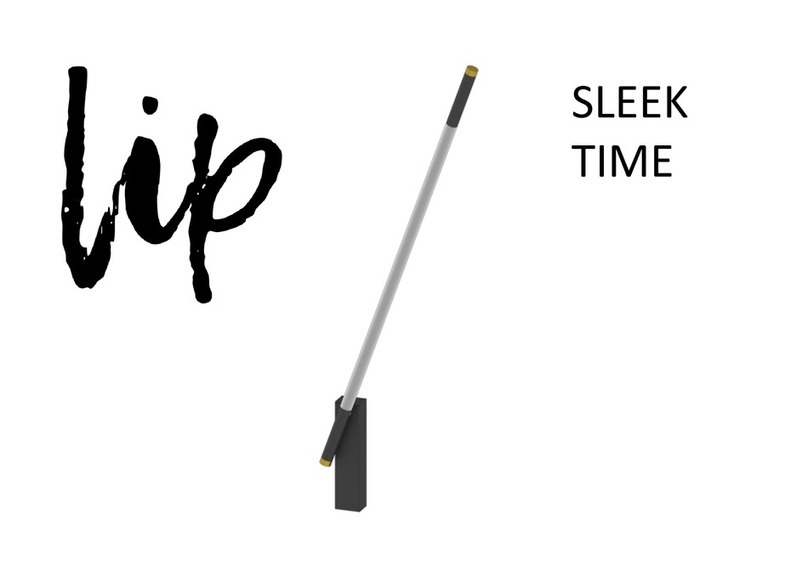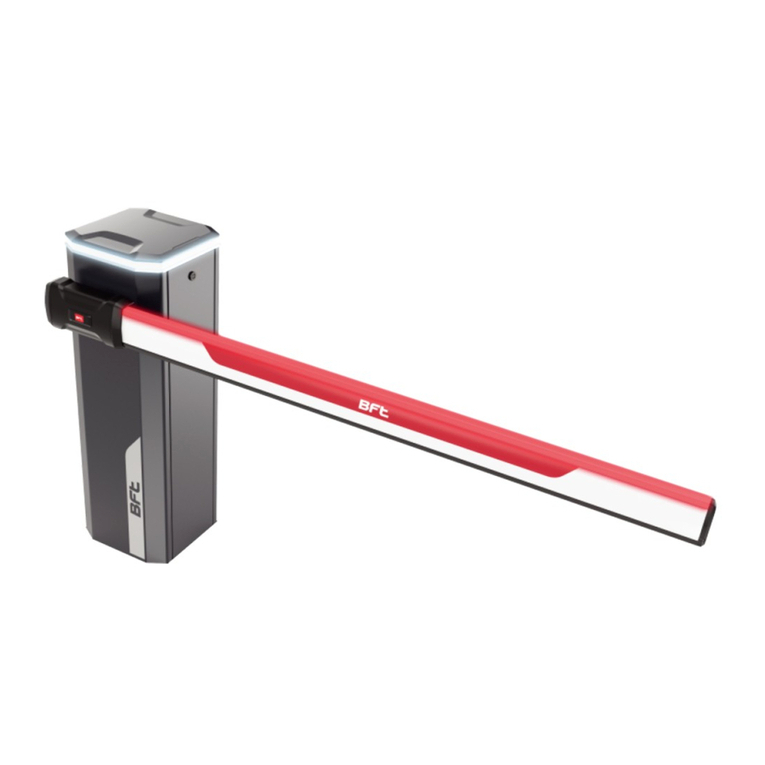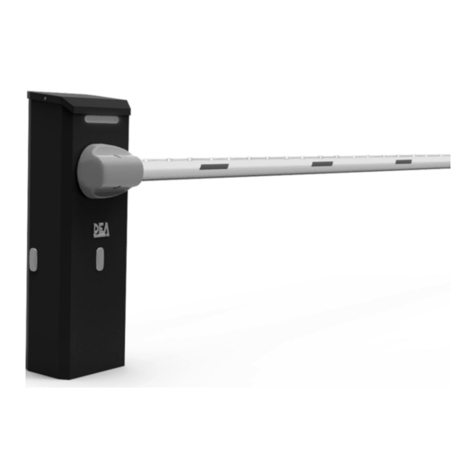
5
Fermo meccanico apertura
Mechanical stop on opening
Mechanische Feststellvorrichtung Öffnen
Butée mécanique en ouverture
Tope mecánico de apertura
Blokada mechaniczna otwarciu
6
7
8
Sblocco di emergenza
Emergency release
Notentriegelung
Déblocage de secours
Desbloqueo de emergencia
Rozsprzęglanie awaryjne
Ripristino automatismo
Reset automation
Reset des Automatismus
Réinitialisation automatisme
Reactivación del automatismo
Przywrócenie działania automatyzmu
Con motoriduttore sbloccato:
With geared motor released:
Bei entriegeltem Getriebemotor:
Avec l’opérateur débloqué :
Con motorreductor desbloqueado:
Z motoreduktorem odblokowanym:
Se l'asta tende a chiudere, aumentare la tensione della molla (distendere la molla con rotazione oraria)
If the bar tends to close, increase the spring tension (extend the spring by turning clockwise)
Wenn die Stange dazu neigt, zu schließen, die Spannung der Feder erhöhen (durch Drehen im Uhrzeigersinn
entspannen)
Si la lisse a tendance à s’abaisser, augmenter la tension du ressort (détendre le ressort en tournant
dans le sens des aiguilles d’une montre)
Si el asta tiende a cerrarse, aumentar la tensión del muelle (descomprimir el muelle girándolo a la derecha)
Jeśli ramię szlabanu ma tendencję do zamykania się, należy zwiększyć napięcie sprężyny (rozkuźnić
sprężynę przez pokręcanie zgodnie z ruchem wskazówek zegara)
Se l'asta tende ad aprire, diminuire la tensione della molla (comprimere la molla con rotazione antioraria)
If the bar tends to open, decrease the spring tension (compress the spring by turning anti-clockwise)
Wenn die Stange dazu neigt, zu öffnen, die Spannung der Feder vermindern (durch Drehen im
Gegenuhrzeigersinn komprimieren)
Si la lisse a tendance à se lever, diminuer la tension du ressort (comprimer le ressort en tournant
dans le sens inverse des aiguilles d’une montre)
Si el asta tiende a abrirse, disminuir la tensión del muelle (comprimir el muelle girándolo hacia la izquierda)
Jeśli ramię szlabanu ma tendencję do otwierania się, należy zmniejszyć napięcie sprężyny (scisnąć
sprężynę poprzez pokręcanie w kierunku odwrotnym do ruchu wskazówek zegara)
Fermo meccanico chiusura
Mechanical stop on closing
Mechanische Feststellvorrichtung Schließen
Butée mécanique fermeture
Tope mecánico de cierre
Blokada mechaniczna zamknięcia
Grani di bloccaggio
Blocking dowels
Arretierstifte
Goujons de blocage
Tornillos sin cabeza de bloqueo
Kołki blokujące
Encoder assoluto
Absolute encoder
Absolut-Encoder
Encodeur absolu
Codificador absoluta
Enkodera absolutnego
